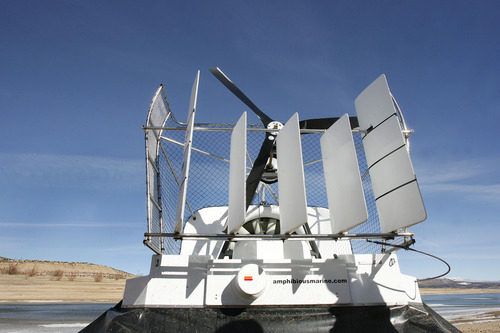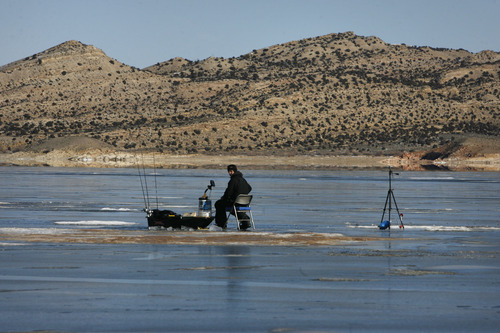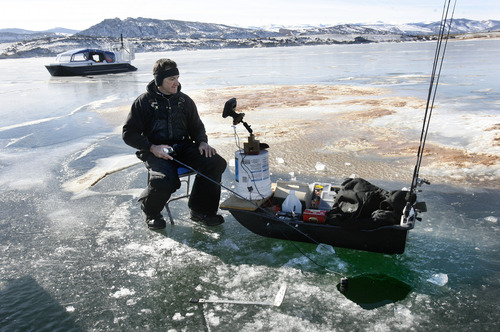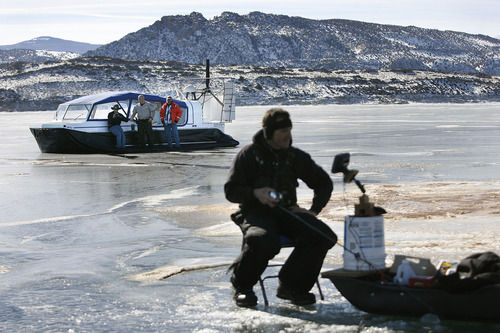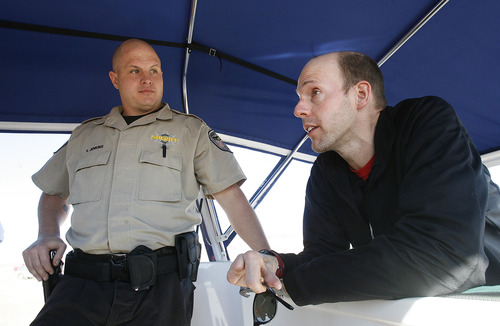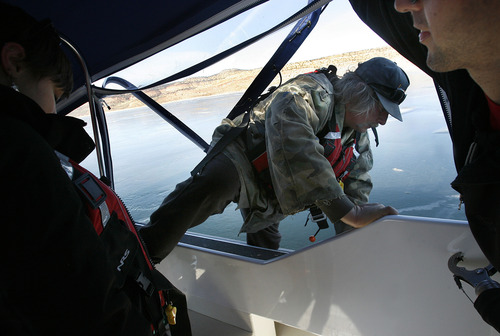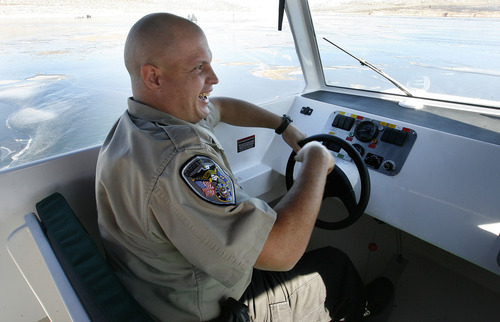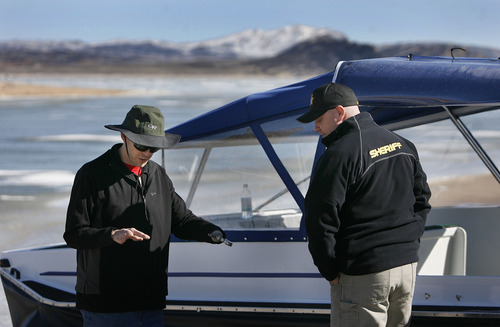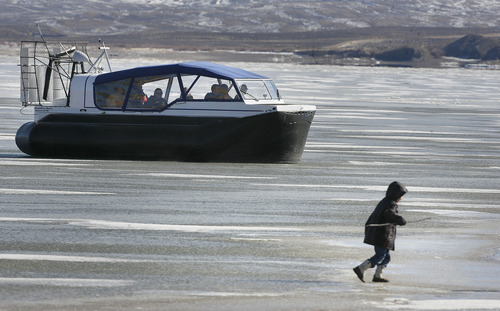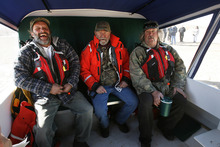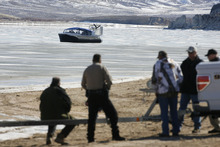This is an archived article that was published on sltrib.com in 2013, and information in the article may be outdated. It is provided only for personal research purposes and may not be reprinted.
Manila • Whips of wind cut through Lucerne Valley early Saturday as ice fisherman Mike Musselman inched slowly ontothe frozen lake. Beneath his feet, the slippery surface of Flaming Gorge Reservoir creaked and groaned. Cracks in the ice glistened under pools of fresh water.
"In three or so hours," Musselman warned. "This ice will be gone."
Musselman has fallen through the ice four times in his 20 years as an ice fisherman. At least once, he was sure he would die. But this time, Musselman wasn't worried.
This time, he rode in on a hovercraft.
The Daggett County Sheriff's Office unveiled its new hovercraft Saturday by offering rides across the frozen gorge to ice fishermen and curious passersby. The vessel, a 24-foot amphibious vehicle equipped to move seamlessly over land, water and ice, has been a long time coming.
In 2009, the Federal Bureau of Investigation coordinated an anti-terrorism drill at Flaming Gorge Dam, a dam at the very edge of the state, where Utah meets Wyoming and Colorado. As authorities tried to evacuate people from the top of the dam, ice, snow and waves prevented boats from reaching the structure from the lake.
Red flags went up immediately: What if the dam were attacked in the dead of winter?
The answer, officials decided, was to buy an all-terrain vehicle — a hovercraft.
Daggett County purchased the vessel using $100,000 in grant money from the U.S. Department of Homeland Security and funds from the Bureau of Reclamation. It's supposed to be used to patrol the dam, already secured by 24-hour police presence, security cameras and motion detectors, but Sheriff Jerry Jorgensen said the hovercraft will probably be used more to rescue ice fishermen who fall through the ice or get stranded in spots unreachable by land or water. Jorgensen said anyone who falls into the water this time of year is not likely to survive more than five minutes.
Until now, Daggett County deputies have relied on traditional boats, off-road vehicles and their own two feet to reach stranded or fallen fishermen. The closest emergency helicopter team would have to fly from Salt Lake City — more than 175 miles away.
"[The hovercraft] can run on land, ice, gravel, grass, snow, mud, you name it — pretty much any flat surface — which makes it really good for this kind of rescue work," said Bryan Phillips of Amphibious Marine Inc., which manufactured the hovercraft. "When those people slip through the cracks, it's the most direct way to get to them."
That's good news for ice fishermen like Clark Sabey, who sat crouched over a small hole in the ice hoping the fish would bite.
Walking gingerly from the hovercraft to meet his friend out on the ice, Musselman told Sabey to be careful. He prodded some snow with his foot, glanced at the sun. The ice was growing thinner by the hour.
"In the early years when I was still screws-loose, I used to stay out here all day," Musselman said. "You throw caution to the wind when you're young. But now I'd rather be cautious and alive than brave and dead."
He calls them baptisms, these close brushes with icy death.
The worst came on March 10, 2007.
Musselman was heading back to shore on foot when the ice under him shattered. He tried to climb out, using solid pieces of ice to get a foothold, but his broad, 6-foot frame got heavier with water.
"I thought, 'Today is the day. I'm going to die,' " he recalled, leaning back in the rear of the hovercraft. "I looked up at the mountain thinking it'd be the last thing I'd ever see when my buddy showed up on his toboggan and pulled me out."
No fishermen have fallen through the ice this winter, Jorgensen said. But, depending on the season, the sheriff's office may see several in a given year.
That's why four deputies will be trained to operate the vessel, which, he added, is a lot harder than it looks.
"When you're in it you can see," the sheriff said, "It kind of goes where it wants."
Directed by a 7-foot propeller to its rear, the hovercraft works much like an airboat, but it's quieter and uses significantly less gas, Phillips said. True to its name, it hovers above the surface by emitting air with such force, it occasionally cracks the ice it glides over.
As fishermen exited the hovercraft, several inquired about getting their own smaller hovercrafts to use on the ice.
"Yeehaw!" shouted fisherman Rick Bock. "That sure beats walking."
Twitter: @marissa_jae


